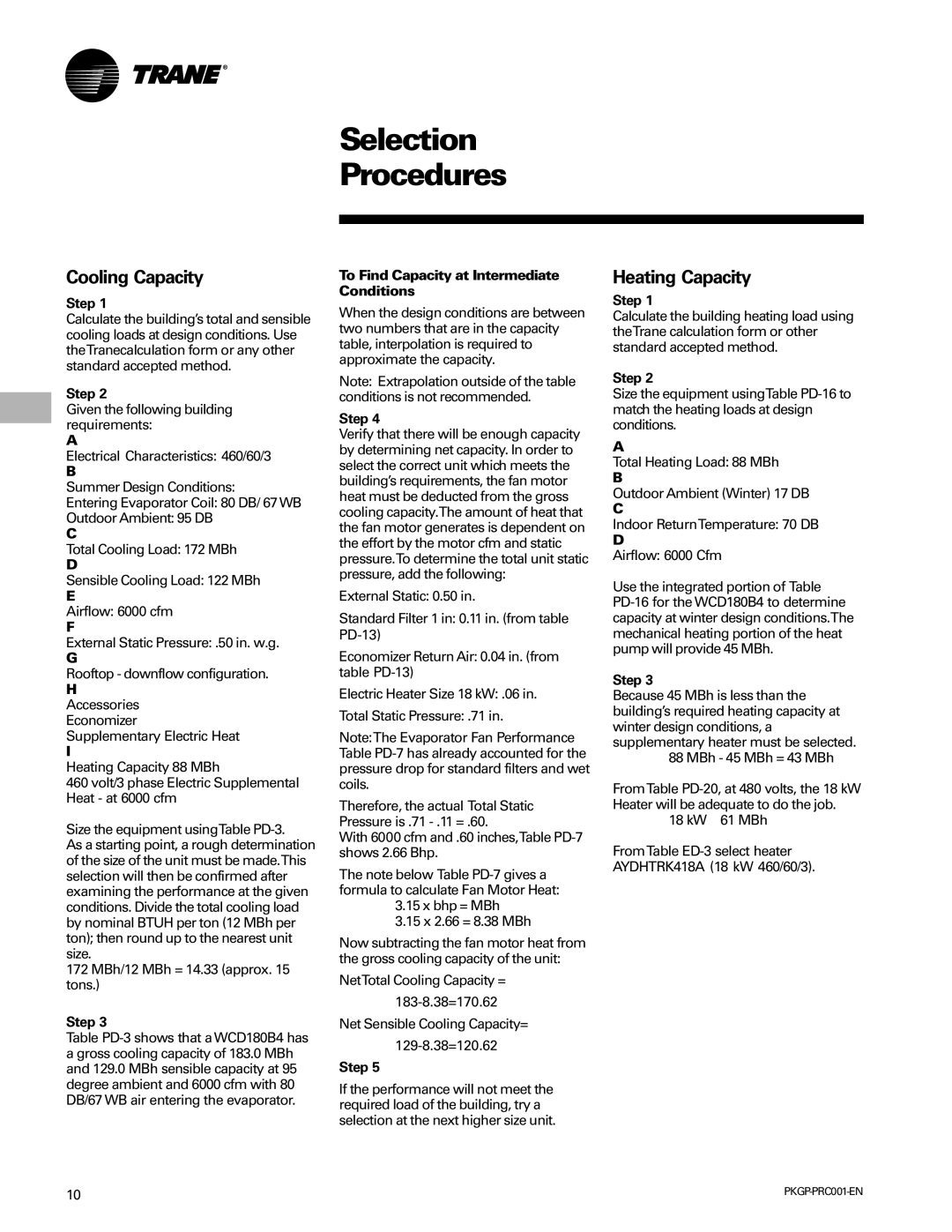PKGP-PRC001-EN specifications
The Trane PKGP-PRC001-EN is a highly efficient and versatile rooftop packaged unit designed for commercial HVAC applications. This advanced system showcases Trane's commitment to quality, reliability, and energy efficiency while catering to a diverse range of climate control needs. Its innovative technologies and features make it a top choice for building owners and facility managers looking to enhance indoor comfort while minimizing energy costs.One of the standout characteristics of the PKGP-PRC001-EN is its impressive cooling and heating capacities, which ensure optimal performance in various conditions. This unit is equipped with advanced scroll compressors that provide efficient cooling and heating, enabling it to maintain a comfortable environment even during extreme temperature fluctuations. The unit also features a multi-position design, allowing for easy installation and adaptation to different rooftop configurations.
In terms of energy efficiency, the PKGP-PRC001-EN excels with its high Seasonal Energy Efficiency Ratio (SEER) and Energy Efficiency Ratio (EER) ratings. These ratings signify its ability to deliver exceptional cooling performance while consuming less energy, ultimately lowering operational costs for facility owners. Additionally, the unit complies with the latest energy standards, including ASHRAE 90.1 and DOE regulations, further emphasizing its commitment to sustainability.
Another notable feature is its advanced control system. The PKGP-PRC001-EN comes equipped with Trane's proprietary Tracer™ controls that provide precise temperature and humidity management. These controls are user-friendly, allowing for easy programming and monitoring of the system's performance. Furthermore, the unit can be integrated with building management systems (BMS), offering greater control and efficiency.
The design of the PKGP-PRC001-EN also emphasizes durability and ease of maintenance. Constructed with high-quality materials, this unit withstands harsh environmental conditions while minimizing wear and tear over time. Access panels and a structured layout allow for straightforward maintenance, ensuring that service and repairs can be conducted quickly and efficiently.
In summary, the Trane PKGP-PRC001-EN is more than just an HVAC unit; it is a comprehensive solution for efficient heating and cooling in commercial settings. With its cutting-edge technologies, energy-efficient performance, and user-friendly control capabilities, this rooftop packaged unit is an excellent choice for those looking to optimize their HVAC operations while embracing sustainability and reliability.

